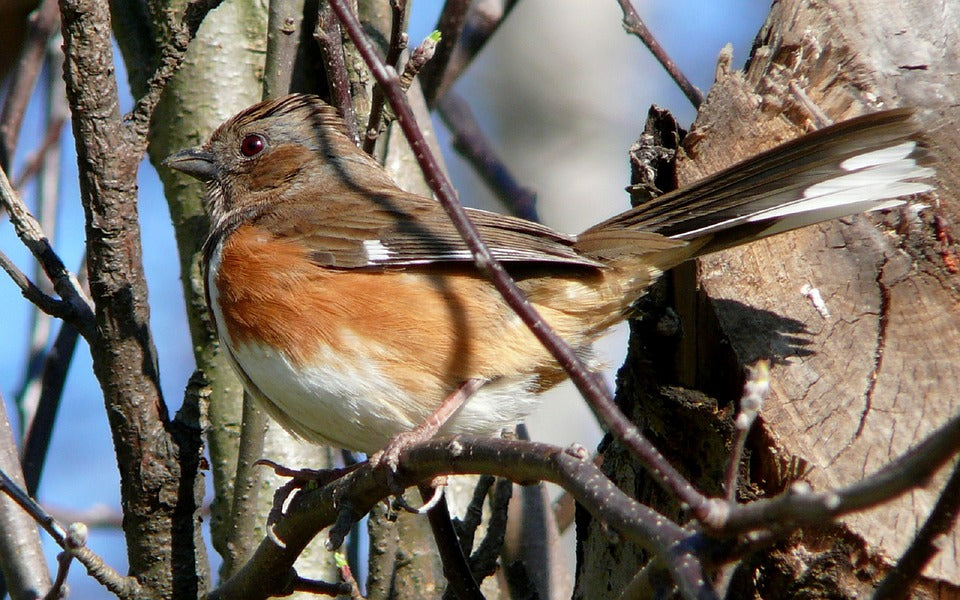Offer
Provide additional details about the offer you're running.
This store requires javascript to be enabled for some features to work correctly.
Provide additional details about the offer you're running.
Provide additional details about the offer you're running.

This bird was once confused with its western ‘twin’ the Rufous-sided Towhee and while they have been observed interbreeding in the central plains; they are now two separate species.
Dense shrub cover and forest edges are where you are likely to find these sparrows while they winter in the southeastern United States. As spring moves in they begin to head north into north-eastern US states, southern Ontario, Quebec and a portion of southern Manitoba. These ground-feeders can often be found on the forest floor in heavy leaf litter, scratching for insects and budding plants in the spring.
These birds sport a stout frame, often appearing somewhat chunky and astute. They feature a strong, triangular bill that is used for cracking seed and long, rounded tail. The male’s plumage is particularly striking, bearing stark black feathers on their backs with vibrant reddish-brown sides and white on their bellies. The females look similar in comparison, but instead of black colouring, sport a rich brown plumage.
The male sounds denote a “drink your tea” rhythm that lasts only a second, but can sometimes begin with two notes of the “drink” beginning. As far as calling goes, the two-parted “tow-hee” call plays a big part in the origin of this bird’s name. Both sexes can also perform a “chewink” and “joree” sounding call in which the exact tones will actually vary based on geographical location.
High Quality Blend
Discover expert tips on attracting and caring for birds in your backyard with Bob and Louise from Gilligallou Bird. Learn about...
Holiday gift giving made easy! Give the joy of backyard bring this holiday season with our Gift Guide.
How the ongoing Canadian wildfires are endangering bird populations in a record breaking wildfire season.

